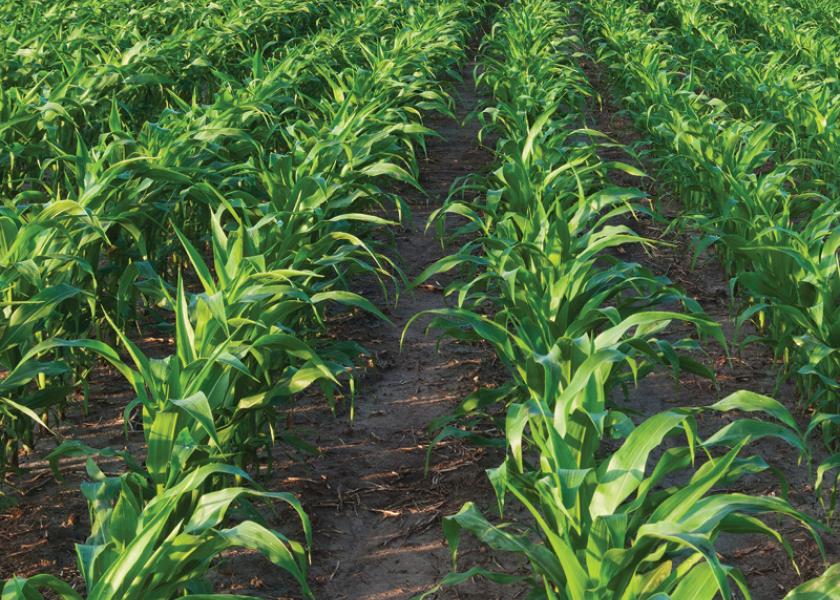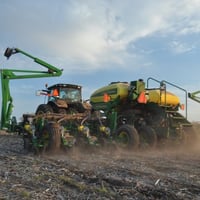The United Soybean Board (USB) released results of a new survey, highlighting consumer perceptions...
Smoke From Wildfires Creates ‘Indirect Concerns’ for U.S. Corn Crop

Smoke from Canadian wildfires filled skies across a large swath of the U.S. recently, causing air quality issues for people residing in the Northeast.
Residents from New England to as far south as Texas reported seeing and smelling smoke from the roughly 150 wildfires that are centered in Quebec and being monitored by the Canadian Interagency Forest Fire Centre.
According to AirNow, a source for air quality data, the level of particulate matter in the air was deemed “unhealthy” from the area around Detroit, Michigan, east to Philadelphia, Pennsylvania.
“We have seen some health advisories starting to pop up in recent days as smoke has reached into the lower levels of the atmosphere,” says USDA Meteorologist Brad Rippey.
The Impact on Corn And Soybeans
Rippey says he doesn’t believe smoke from the fires – some of which have been burning more than a week – has had any direct impact to date on row crops just now emerging and starting to grow.
His greater concern is the indirect impact the smoke could have on crops, especially corn. Specifically, a concentration of smoke over a period of several weeks could contribute to lower temperatures and fewer growing degree units (GDUs) because of reduced solar radiation.
Sunlight is critical for corn to maximize photosynthesis and crop yield, according to Mark Jeschke, Pioneer Agronomy Manager, in his in-depth online article, Is Smoke from Wildfires Affecting Crop Yields?
“Among the many potential effects on crop growth (from smoke coverage) are three primary factors with the capability to directly impact photosynthesis: reduced sunlight intensity, increased sunlight diffusion, and increased ozone (O3) levels,” Jeschke writes. “Corn, in particular, is susceptible to reduced yields and reduced standability if the plants need to remobilize carbohydrates from the stalk to make up for a deficit in photosynthesis,” he adds. “This weakens the stalks and opens the door for stalk rot pathogens. Corn is at the greatest risk from lower-than-normal solar radiation during grain fill, which is still weeks away.”
Cloud Cover But No Rain Shower
For now, Rippey says his primary concern about the smoke is its suppression of convective activity – a lack of summer rain showers. “The smoke is dense enough in the Northeast that we're seeing where thunderstorms and showers are being suppressed by the extremely dense smoke at all levels of the atmosphere,” states Rippey.
The longer the fires burn and release smoke that moves into the Corn Belt, the more potential there is for crop growth and development to be affected.
“There should be an opportunity for some rainfall soon, especially in parts of the western and southern Corn Belt,” Rippey says. “Maybe we’ll catch a few breaks in the stubborn ridge that has been parked over the Midwest, the northeastern U.S., as well as much of Canada, for the better part of the last four to six weeks.”
EDITOR’S TAKE:
History suggests that this type of phenomenon is not all that uncommon. Fallout from the Mt. St. Helen eruption in Washington State and dust storms in China that circled the globe are just a couple of recent examples. Unfortunately, they did have a similar impact of diffusing sunlight and lowering production in a pretty wide range area of the U.S., not unlike what this article is suggesting could happen as a result of the Canadian wild fires. How dramatic the impact on production and prices might be will only be known when harvest time takes place. In the meantime, we will remain hopeful that any impact is minimal. Keep up your service and parts specials to help farmers and ranchers weather this latest potential impact on their trucks and their livelihood.







